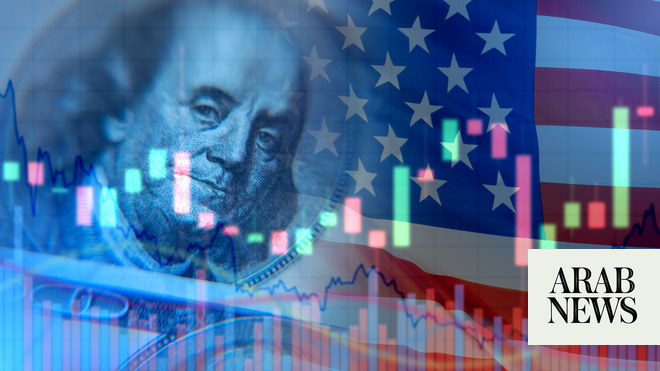
SINGAPORE: The dollar held firm near a seven-week peak on Monday, after a slew of strong US economic data reinforced the view that the Federal Reserve will have to raise interest rates further and for longer, according to Reuters.
Data on Friday showed US consumer spending rebounded sharply in January, while inflation accelerated.
The personal consumption expenditures price index, the Fed’s preferred gauge of inflation, shot up 0.6 percent last month after gaining 0.2 percent in December.
The dollar index, which measures the US currency against six major peers, was up 0.038 percent at 105.21, just shy of the seven week high of 105.32 it touched on Friday after the hotter-than-expected data was released.
The index is up 3 percent for February and set to snap a four-month losing streak as investors adjust their expectations of US interest rates remaining higher for longer.
The market is now pricing rates to peak at 5.4 percent in July and remain above 5 percent through the end of the year.
“We’re in a bit of a nervous environment,” said Moh Siong Sim, currency strategist at Bank of Singapore, adding that the market is uncertain about the future pace of Fed interest rate hikes.
“Whether (Fed) can maintain 25 basis point hike? Or will they be forced to re-accelerate the pace? So I think these are the questions that the market is grappling with,” Sim said. “And there is no clear answer right now.”
Fed policymakers speaking on Friday did not push for a return to last year’s jumbo rate hikes, suggesting that for now central bankers are content to stick to a gradual tightening path despite signs that inflation is not cooling as they had hoped.
The Fed earlier this month raised rates by 25 basis points and is expected to increase by the same margin at its March 21-22 meeting, though some analysts see the possibility of a 50 basis points hike if inflation stays high and growth remains strong.
“We now believe it is a much closer call that officials hike by 50 basis points in March than our earlier 25 basis points assumption,” said Kevin Cummins, chief economist at NatWest Markets.
“We put the odds at about 60 percent that the FOMC hikes by 50 bps.”
Markets have also nudged up the likely rate tops for the European Central Bank and the Bank of England.
The two-year US Treasury yield, which typically moves in step with interest rate expectations, was up 3.4 basis points at 4.839 percent, just shy of the three-month high of 4.840 percent it touched on Friday. The euro was flat and pinned near the seven week low of $1.0536 it hit on Friday.
Sterling was last at $1.1943, down 0.01 percent on the day.
The Japanese yen strengthened 0.12 percent to 136.29 per dollar, having slipped to more than two month lows of 136.58 earlier in the session.
Incoming Bank of Japan Governor Kazuo Ueda said on Monday the merits of the bank’s current monetary policy outweigh the costs, stressing the need to maintain support for the country’s economy with ultra-low interest rates.
The Aussie was 0.25 percent lower at $0.671, having touched near two month low of $0.6705. The kiwi fell 0.28 percent versus the greenback at $0.614.












